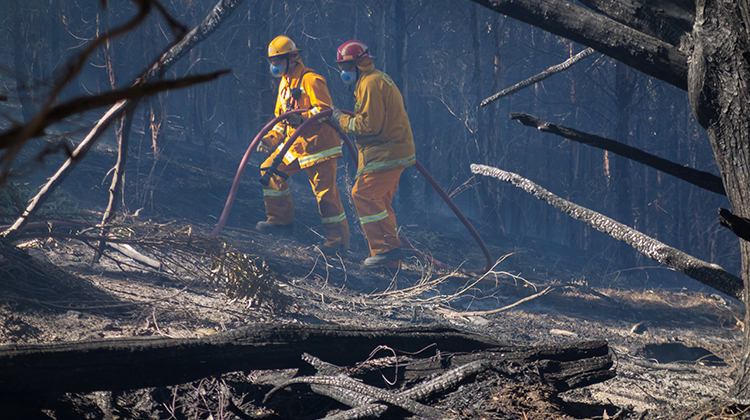Australia’s principals under extreme stress even before pandemic

Nearly one in three principals face stress and burnout from their jobs exacerbated by high levels of threats and physical violence by parents and students.
However, the authors of the Australian Principal Occupational Health, Safety and Wellbeing Survey believe the COVID-19 pandemic could usher in better attitudes toward school leaders.
School leaders are more concerned for the mental health of students and staff than in any previous year given the catastrophic bushfires, floods and COVID-19 pandemic which have marked the start of 2020.
Funded by The Australian Research Council the survey was awarded to the Australian Catholic University (ACU) and led by Chief Investigators ACU Professor Herb Marsh and his colleagues from the Institute for Positive Psychology and Education at ACU, and Professor Philip Riley from Deakin University’s School of Education.
The researchers believe mass disruptions to school and home life during COVID-19 could trigger a welcome uplift in community appreciation for the ongoing and unforeseen challenges faced by school principals.
Deakin University professor Phil Riley said the national school shutdown from COVID-19 restrictions had reminded communities of the vital role that school leaders play.
“The sudden changes to education delivery prompted by COVID-19 restrictions required an unprecedented response by school leaders to roll-out remote learning opportunities for their students,” Riley said.
“We know from anecdotal evidence that many parents, although impacted themselves, are deeply appreciative of this work by principals and educators. We hope this points to a future in which there is greater awareness and acknowledgement of the many stresses and challenges that principals face on a regular basis as they lead their students and staff.”
The 2019 survey found that, compared to the general population, a far higher percentage of school leaders reported being subjected to threats of violence (51% versus 7.8%), physical violence (42.2% versus 3.9%), bullying (37.6% versus 8.3%), conflicts and quarrels (57.5% versus 51.2%), and gossip and slander (50.9% versus 38.9%).
“Last year school leaders told us they were struggling from many serious work-related issues including stress caused by parents, burn-out from the sheer quantity of work, employer demands and student and staff mental health issues,” Professor Marsh said.
“The combined impact of record levels of heavy workloads and offensive behaviour by parents and students is a risk to school leaders’ long-term health and even their life expectancy.”
Riley added that while violence was a problem anywhere where strong emotions were involved, education leaders were drawing a line in the sand to say this appalling behaviour must end in schools.
Older workforce
Almost three quarters (70.3 per cent) of school leaders are aged over 50 years and more than 25 per cent of Australia’s school principals are aged over 60 years and nearing retirement.
“It should be no surprise that fewer educators are willing to step up and take on the increasingly-complex role of school principal,” Riley said. “The low replacement rate for retiring school principals tells a truly dire story about our education system which should concern us all and needs further investigation.”
“Countless studies show the transformative nature of education and school leadership. If we, as a nation, are serious about the key role of education in the growth and development of Australia, we simply cannot ignore school leaders’ cries for help.”
Progress
- In 2017, Victoria was the first state to implement substantial changes to principal work practices that are consistent with the recommendations of this report. As a result, Victoria holds the equal lowest number of red flags of any state or territory in response to the survey, and Victorian school leaders reported the highest job satisfaction.
- In 2019, both the Northern Territory and Queensland also implemented substantial, co-ordinated, evidence-based changes to their systems in line with the recommendations of this report. The Northern Territory now reports the equal lowest number of red flags with Victoria, and the second highest level of job satisfaction in the country. The data collection period for the 2019 survey closed before Queensland implemented their workplace changes. It is likely that the positive effects experienced in Queensland will be displayed in next year’s survey results, similar to what has occurred in Victoria and the Northern Territory.
- Building on the success of the program with School Principals, Australian Catholic University implemented a similar survey in 2019 on behalf of the Northern Territory Department of Education targeting all government school-based teachers in the Northern Territory, and is repeating this survey in partnership again in 2020.
- Despite these promising developments, further improvement in school principals’ wellbeing is necessary. ACU and Deakin plan to begin work on a mental well-being app designed specifically for principals. This new project will build on our ongoing work with our survey.
The Australian Principal Occupational Health, Safety and Wellbeing Survey 2019 is available here